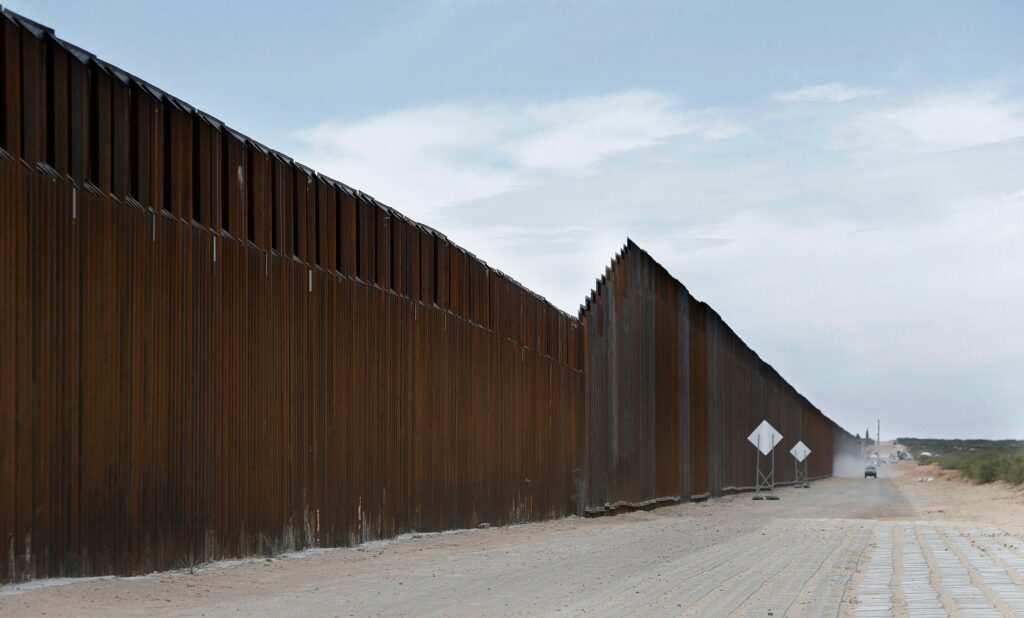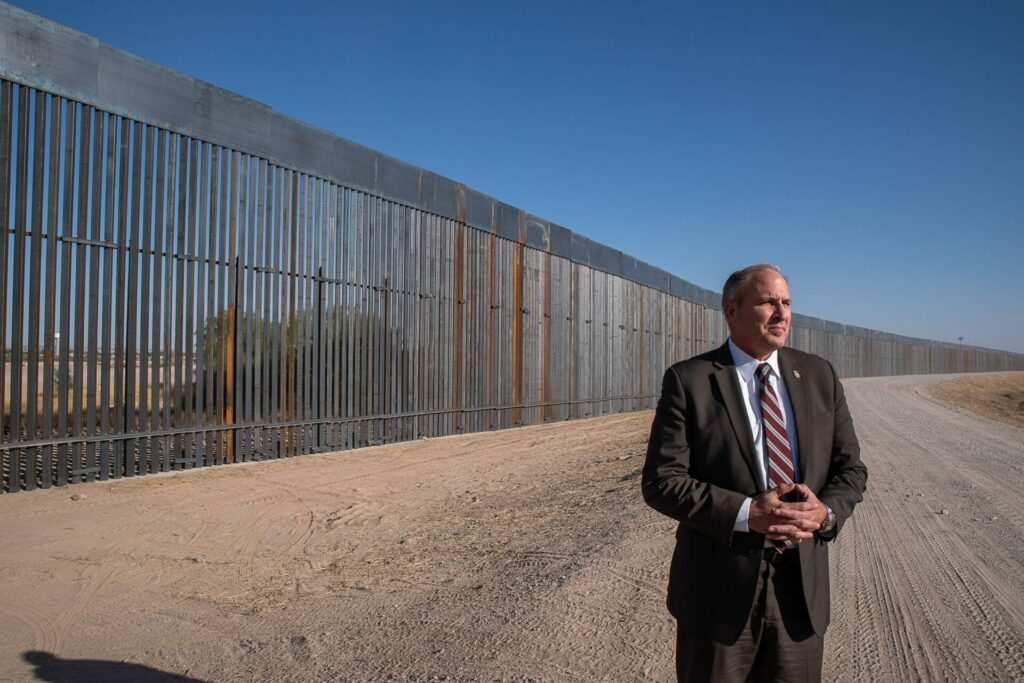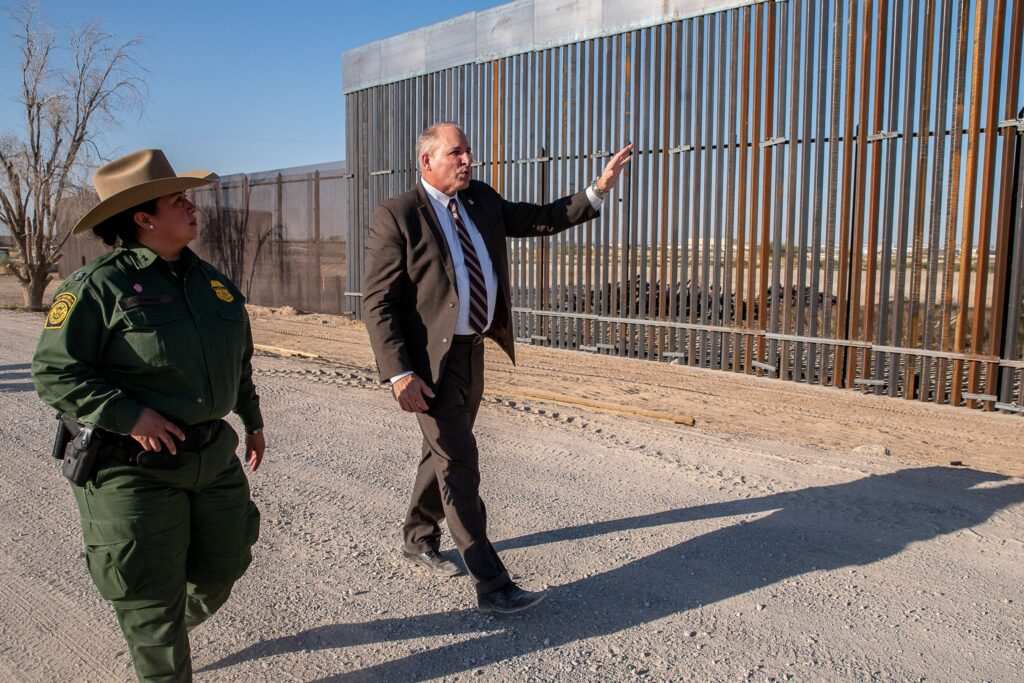It was the promise that helped elect President Trump in 2016, a campaign rally chant that became reality. At the close of the administration, U.S. Customs and Border Protection has erected 450 miles of barriers along the U.S.-Mexico border.
“The border wall system proves its worth every day with every mile,” CBP Acting Commissioner Mark Morgan said in a call on Tuesday. “There is no question it keeps CBP personnel safer and keeps migrants safer.”

Most of the new steel-and-concrete fencing has replaced existing barriers. CBP and the Army Corps of Engineers have torn down long stretches of low vehicle barriers and 18-foot-tall steel bollards and replaced them with 30-foot steel bollards.
The Border Patrol’s El Paso sector — which includes part of West Texas and all of New Mexico — has seen 131 miles of new fencing, the most of any of the agency’s six border regions. Construction is ongoing east of the Ysleta port of entry in El Paso County and in southern New Mexico west of the Santa Teresa port of entry.

The Tucson sector in Arizona saw the second-highest number of new miles of border fencing. About 114 miles of barriers have been built, including in environmentally sensitive desert ecosystems and on cultural sites sacred to the Hia-Ced and Tohono O’odham tribes. Construction has also transformed isolated, previously undisturbed mountain ranges that have seen very little illegal traffic in the past.
The Rio Grande Valley of Texas, one of the Border Patrol’s busiest sectors, saw the fewest new miles of border barrier built, roughly 17 miles total over the past four years. That’s in part because much of south Texas border real estate is in private hands and the Trump administration struggled to acquire land. The administration has continued legal condemnation proceedings to acquire land from landowners for construction.
‘We got it done’
Morgan defended the administration’s focus on border barrier construction, calling the construction of 450 miles of fencing “a historic accomplishment.”

“People said we’d never get it done,” Morgan said. “I said, ‘We’re going to have 450 miles of concrete and steel in the ground.’ We got it done. To say this was a remarkable achievement would be an understatement.”
He said more than $16 billion has been spent or allocated to build a total of 800 miles of what CBP calls a “border wall system,” which can include access roads, lighting and technology in addition to steel fencing.
That sum includes about $4.5 billion appropriated by Congress in the past four years for border barriers. But the majority — about $10.5 billion — has been diverted by the Trump administration from other accounts, mostly the Department of Defense, according to the nonpartisan Migration Policy Institute, a Washington, D.C.-based think tank.
The recent COVID-19 relief bill, signed by Trump in late December, also allocates $1.4 billion for border barriers.

The administration’s border wall construction plans face legal challenges.
The U.S. Supreme Court in October agreed to hear one of three cases challenging the legality of Trump’s use of $3.6 billion in military funding to build the border barrier, the result of his February 2019 declaration of a national emergency.
The lawsuit, Sierra Club v. Trump, was brought by the ACLU on behalf of the Sierra Club and the Southern Border Communities Coalition.
“Every lower court that has considered the case has found that the President has no authority to waste billions of taxpayer dollars on construction,” Dror Ladin, senior staff attorney with the ACLU’s National Security Project, said at the time.
Increasing ‘encounters’ at border
Border Patrol has reported 140,591 “encounters” at the U.S.-Mexico border so far in fiscal 2021, data that includes October and November apprehensions of unauthorized immigrants and “encounters” that result in the quick return of migrants to Mexico or their country of origin. That is up 60% from 87,782 “encounters” during the same two months in fiscal 2020.

Morgan said meetings with the transition team of President-elect Joe Biden have been “somewhat productive” but continued to warn that any rollback of heightened border restrictions could result in an increase in illegal immigration at the Southwest border.
He pointed to the Migrant Protection Protocols, under which asylum seekers must wait in Mexico for court dates in the U.S.; the use of a Centers for Disease Control order allowing CBP to turn back nearly all unauthorized migrants; and the border wall system as tools that, if removed, will result in “a full-blown immigration crisis.”
Immigrant advocates have characterized those policies as unlawful and overly harsh.
Along the more than 2,000-mile U.S.-Mexico border, there currently exists more than 700 miles of “primary” border barrier, according to CBP.
___
(c) 2021 the El Paso Times
Distributed by Tribune Content Agency, LLC.



